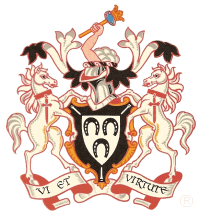An introduction to UK farriery

The craft of farriery is known to date back over 2,000 years to a time when the application of an iron shoe overcame the problems of wear to an equine’s foot and hoof caused by the first metalled roads. Farriers, like blacksmiths, are skilled metal workers. But on top of that, they must be experts on the foot structure and lower limb of all equines. Nowadays, he or she (there are an increasing number of female farriers in the UK) is a professional person regulated by law, who through their good practice in care, trimming and shoeing plays a crucial role in the ongoing welfare of the horse.
To become a qualified farrier in the UK takes about four years and involves sitting exams, being continually assessed and serving an apprenticeship. There are colleges which run specialist farriery courses and it is necessary to have a minimum academic requirement to become enrolled. It is also necessary to have an Approved Training Farrier (ATF) who will oversee the apprenticeship. The apprenticeship scheme has recently been overhauled and the Company has been instrumental in this.
Once an apprentice farrier has passed the End Point Assessment (EPA) and received the qualification of Diploma (DipWCF) which is awarded by the Farriers’ Company, they are free to go out and shoe and trim equines for clients. Some will join an existing business while others will become sole traders. Building up a relationship with the owners and their equines, being organised and business-like, as well as having skill, knowledge and professionalism, are key factors in being a successful and effective farrier.
The 1975 Farriers Registration Act requires all farriers in England, Wales and Scotland to be registered with the Farriers Registration Council which is based in Peterborough. The Council is a statutory regulator undertaking the responsibilities set out in the Act which involves maintaining a register of farriers eligible to practise in Great Britain, regulating farriery education up to the point of registration, and regulating professional conduct. Thus, any unregistered person shoeing a horse is acting unlawfully and will be subject to disciplinary action.
Should farriers wish to obtain the higher qualifications of Associate then Fellow, they do so via the Company. The AWCF and FWCF are recognised throughout the equestrian industry as hallmarks of knowledge and excellence. The qualifications are awarded via assessments and exams, and it is necessary to submit a thesis for the Fellowship. Once a farrier has attained one of higher qualifications, then he or she may apply to the Company to become a Master Farrier, but this does not require an examination.
The Worshipful Company of Farriers and the craft in the United Kingdom is recognised worldwide for setting the highest standards. Examiners are appointed by the Company and are both farriers and equine vets, and they will oversee the exams both in the UK and overseas. In turn, farriers from abroad can attend the awards ceremony to receive their certificates, which is held in the City of London. The Company is proud of its long and involved association with the craft of its origin, and its role in promoting equine welfare.
A City of London Livery Company
The Company is also proud to retain its long association with the City of London, even if there are far fewer working equines on the streets than there once were. Livery Companies have been part of the fabric of the City of London for many centuries - the first recorded Company, the Weavers, received their Charter in 1155. In those days, all Livery Companies were formed to manage and protect their trade or profession.
The Farriers’ Company can chart its inception back to 1356 when Henry Pykard was Lord Mayor of London. It is documented that he ‘called together’ leading farriers in the City and demanded that they ensure high standards were maintained within the 'mystery' of farriery (here, mystery is derived from the Latin ‘misterium’, or professional skill). Like most Companies, the Farriers still have a Master who changes annually at Common Hall each September. There is a Court which is comprised of three Wardens, Past Masters, Assistants, a Clerk, a Treasurer, a Craft Secretary & Registrar, honorary Assistants and other invited Liverymen. There have been over 660 Masters of the Company, which continues to hold most of its meetings in the City, including the annual banquet which is held at the home of the Lord Mayor, the Mansion House.
Many City Livery Companies have their own Hall where they both host their functions or hire out the rooms. As the Farriers do not have their own Hall, like several Companies, they are peripatetic and use a range of Halls for different functions. They are also not an especially wealthy Company, not being part of the ‘Great Twelve’ or owing property in the City.
Retaining the association with the City, and holding functions in the Halls, enables farriers and Liverymen from all over the world to gather regularly and exchange news and views. This fellowship aspect of Company life remains as important as its role as Head of Profession.
